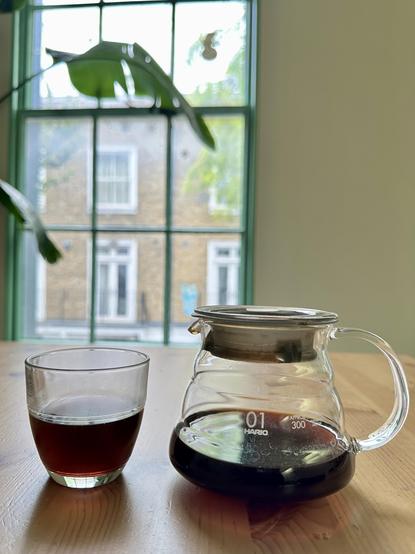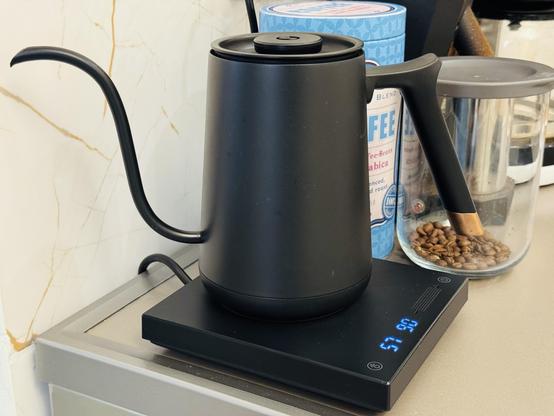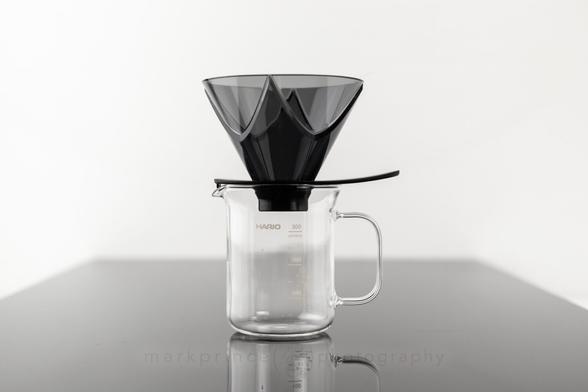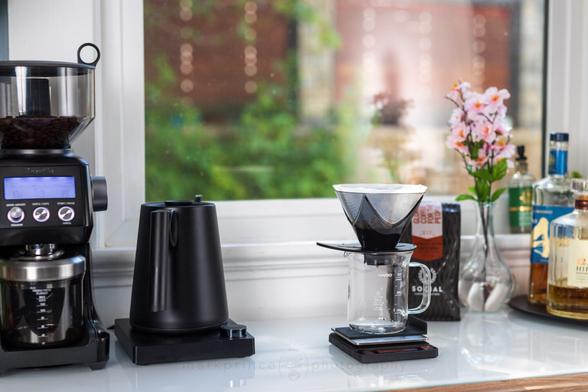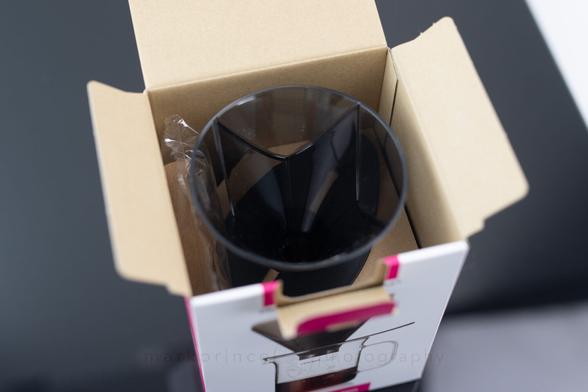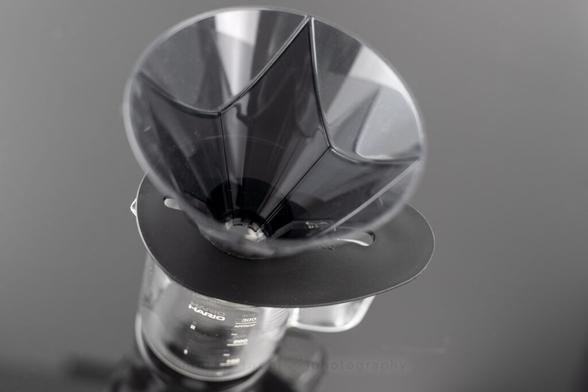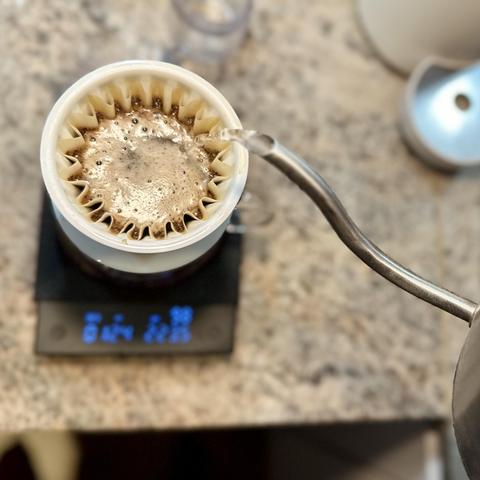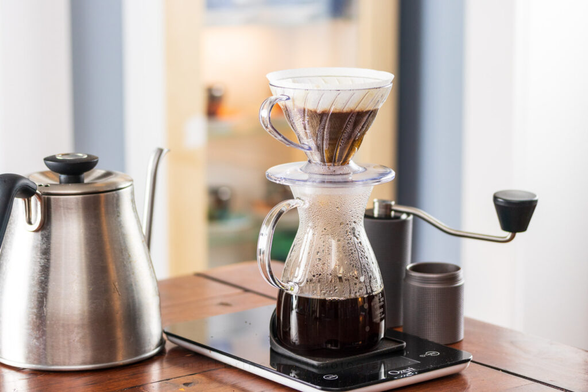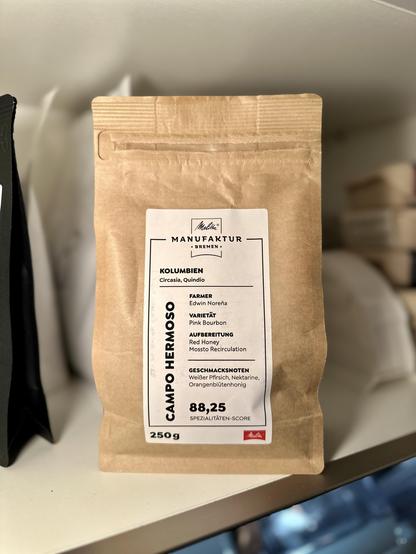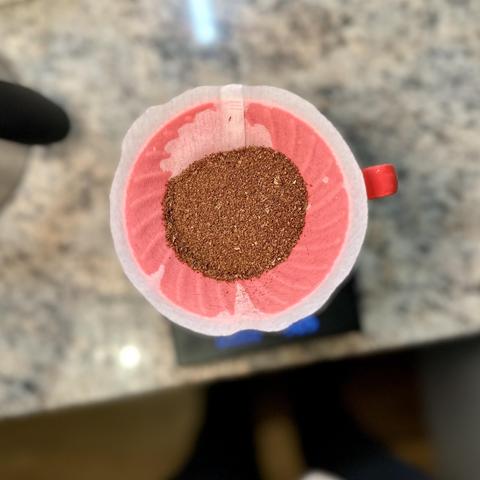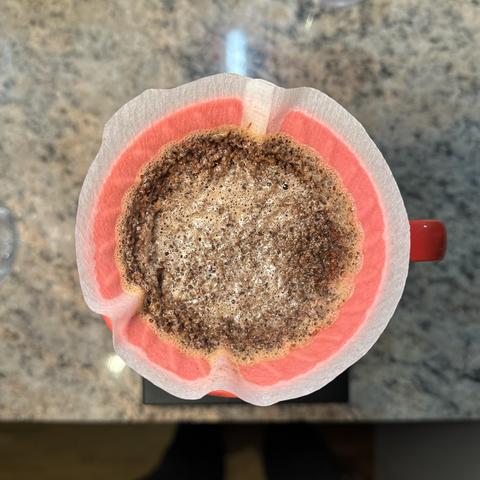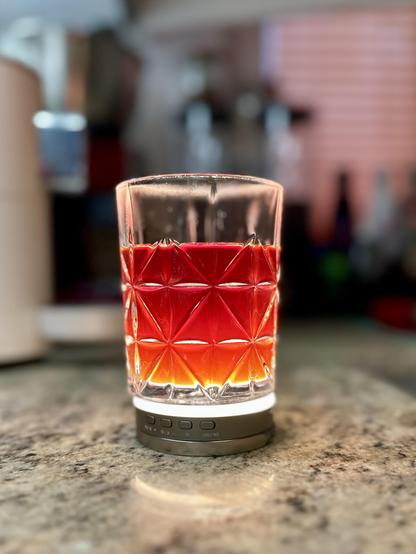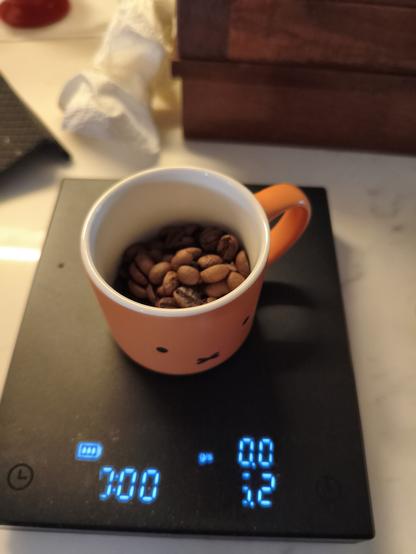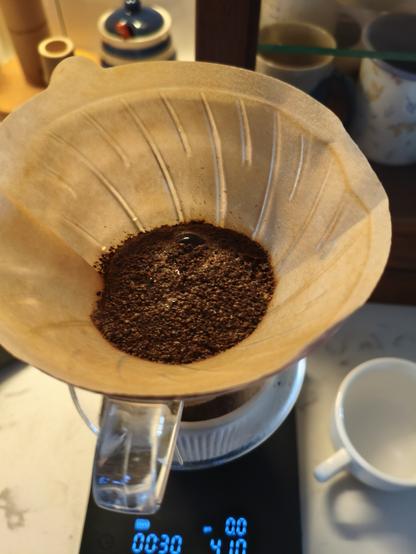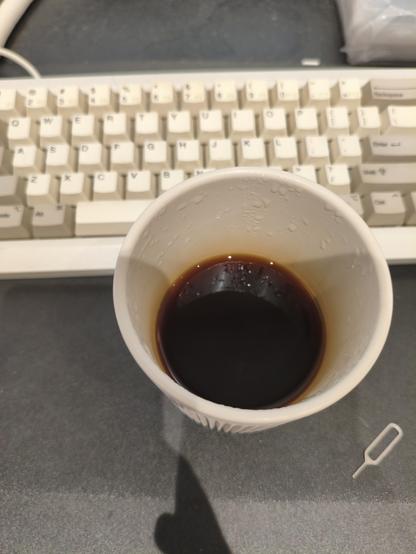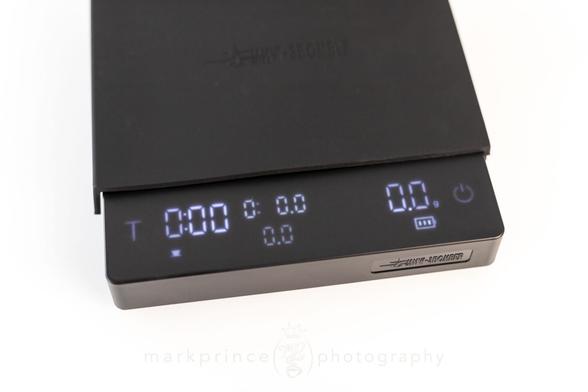RE: https://mastodon.social/@enyantiomer/115281491067279774
#Coffee #IndianCoffee #Pourover #Arabica
jumping ant washed arabica by black baza: https://www.blackbazacoffee.com/products/jumping-ant?_pos=2&_fid=03995ba63&_ss=c
16 clicks on timemore c2
1:16 pourover (espro bloom)
about 2 minute brew time
100°C water
the brewed coffee smells like caramel and peanuts with a very slight burnt note.
the first sip tastes sweet and floral with no bitterness. there is a peanut/nutty note in there. very mellow and mild acidity. an enjoyable cup.
#coffee #pourover #pourovercoffee
Hario Mugen Dripper Review
Share
Article
The Hario Mugen Ready to Go
Box Opened
Inside the Mugen Dripper
Hario Mugen Box
Logo Detail on Mugen Stand
Hario Mugen Ready to Brew
Hario Mugen Brewing
Hario Mugen Brewing
Hario Mugen and Beaker Brewing
All the Parts
Cone of Spent Coffee in a Hario Mugen
Full Brewer
The Mugen unboxed
Slurry in the Mugen at start of brew
Background
At first glance, almost everyone thinks this is a variant of Hario’s V60 system. I made the mistake myself when first spotting it on Hario’s social media channels. But it is a different beast
The Mugen has mostly flat sides, so the Hario V60 paper will adhere to them when wet, limiting the flow through of coffee to the bottom of the cone. This is exactly how the Chemex works too, and that makes these two brewers a rather unique breed. Almost all pour over systems and designs, from Kalita to Melitta, feature ribs or accordion paper filters to promote sidewall flow and extraction of brewed coffee. Some brewing water also manages to bypass the full coffee bed in those brewers.
The Mugen (and the Chemex) don’t have this brewing style. Though Hario hasn’t specifically stated this, the Mugen also adheres (heh heh) a bit more to the current trend of no-bypass brewing.
What’s particularly interesting to me is this: Hario designed the Mugen for a more hands off, easy brewing style that doesn’t require a lot of hands on work. I have seen some folks online complicate up the brewing process quite a bit with the brewer, trying to do a typical V60 brew on it. That misses the mark a bit. I have not seen many talk about the no-bypass style this dripper can offer.
I have a lot more to say about the no-bypass elements of this brewer, and also modifying it somewhat by inserting it into a Hario Switch device to turn it entirely into an immersion, no-bypass brewer similar in usage and results to a NextLevel Pulsar. That is going to be its own article, based in our How To section, later this year.
For this review, we’re reviewing the Hario Mugen based on the way Hario designed it and how they say it should be used. That doesn’t mean you shouldn’t experiment with the brewer if you want to. It just means that Hario wanted to produce a bulletproof, “hands off” brewer, and we’re going to test it that way to see if they hit the mark.
Out of the Box
The Mugen from Hario looks like a stylized V60, until you realise there’s no ribs inside. There are small air channels in the diamond pattern inside the brewer (a good thing) but no ribs. This puts the brewer in the Chemex territory, as a filter paper brewer that does all its extraction through the bottom of the cone, not the sides.
Mugen Interior
There’s no ribs inside the Mugen, just very small air channels to help maintain coffee flow through the bottom of the filter.
Hario sells the Mugen in white ceramic as well as clear and and dark tinted polycarbonate resins. The ceramic model should retain more heat during the brew process, but I find Hario’s resin also work pretty well at retaining heat during a brew.
The funnel opening on the Mugen is a bit smaller than the Hario V60 models, which feature their ribs right to the funnel open, presenting a larger overall exit space. The diameter of the opening on the Mugen is only 1-2mm smaller than the V60s I own, but it’s a solid round hole with super tiny airflow notches, whereas V60s have the exposed rib ends.
The bottom plate of the Mugen is a new design from Hario as well, designed to be easy to handle and fit a wider variety of carafes, mugs and cups. It has a lip at the rounded end to latch onto the edge of the cup or carafe you’re brewing into. The dark resin model we have for testing is very lightweight, and very easy to clean.
The Hario Mugen Box. We bought the model with the included carafe.
The Hario Mugen Box. We bought the model with the included carafe.
Glad to see Hario is going easy on the packing plastic bags. Kudos
Glad to see Hario is going easy on the packing plastic bags. Kudos
Because we bought the kit with the beaker, it included extra paper filters as well.
Because we bought the kit with the beaker, it included extra paper filters as well.
Not too shabby – for under $25, you get a complete brewer with filters, filter holder, and brewing carafe.
Not too shabby – for under $25, you get a complete brewer with filters, filter holder, and brewing carafe.
The Hario Mugen and Hario Beaker
The Hario Mugen and Hario Beaker
The logo detail on the Mugen’s stand / holder.
The logo detail on the Mugen’s stand / holder.
The Hario Mugen with the unbleached paper filters (what it ships with) inside.
The Hario Mugen with the unbleached paper filters (what it ships with) inside.
Here’s how the filter looks when wet – it adheres to the sides, effectively creating a no-bypass brewer.
Here’s how the filter looks when wet – it adheres to the sides, effectively creating a no-bypass brewer.
Using the
Hario is specific about the Mugen’s design ethos: it can produce a great cup of coffee without the need to do a bloom phase, or staged pours, or even stirs. They advise adding your coffee, pouring all (or most) of your brewing water in right away, and letting the brewer do its thing over a 2 minute period.
Hario’s Brand Ambassador, Tetsu Kasuya (the 2016 World Brewers Cup Champion, so he knows what he’s talking about) explains the technique and reasons for the designs.
Hario’s base formula for the Mugen is to use a finer grind than V60 (not much) and around 25g coffee for 300g of brewing water used. We followed that ratio, which is only slightly off the CoffeeGeek Ratio of 8g/100g for pour over (24g/300ml).
Also, if you were ever driven nuts by the meticulous super timed pours, stirs, pauses you see V60 aficionados do, the Mugen might be just right for you, because Hario advise pouring all your brewing water (yep, all 300ml) in about 15 seconds, aggressively covering all the grounds and creating agitation, then… just walk away and let the brewer drain out over the next one and half minutes. If you don’t see it fully drained out 90 seconds after you ended your pour, you ground the coffee too fine. If it drains in less than 90 seconds, you ground the coffee too coarse. Pretty straightforward.
It did take several tries to get our grinder dialed into Kasuya’s recommended 90 second draw down time; we had to go coarser on the grind, dialing in a bit more coarser than I even like to use with a V60. Once I got there the finished cup was… okay.
Prewet (wash) the paper filter so it adheres to the side of the Mugen dripper (and washes out some of the paper taste)
Prewet (wash) the paper filter so it adheres to the side of the Mugen dripper (and washes out some of the paper taste)
Pour fast – all 300ml water – within 15-20 seconds, using the speed and flow to create all the initial agitation
Pour fast – all 300ml water – within 15-20 seconds, using the speed and flow to create all the initial agitation
No need for a scale – just fill to within 5mm of the lip of the Mugen within 15 seconds, and that’s roughly 300ml poured.
No need for a scale – just fill to within 5mm of the lip of the Mugen within 15 seconds, and that’s roughly 300ml poured.
When the brew is done, you should see a cone shape of spent coffee inside the dripper.
When the brew is done, you should see a cone shape of spent coffee inside the dripper.
Based on the video, Kasuya looks to be using a darker roast than what we use, so my next step was to alter the grind to add 15, then 30 seconds to the draw down time, keeping the water amount and dose the same.
I found going to a 1:45 to 2:00 draw down time worked best for the coffee I was using (Social Coffee’s Volcan Azul from Costa Rica) Total brew time is up to 2:15, allowing for the 15 second pour. This got me curious – how could my timing tests be better than what a World Brewing Champion does? So I got some of Social’s darkest roast (Farmer’s Collective) and gave it a try. Sure enough, brewing it using Kasuya’s recommendation delivered the best overall cup.
So long story short – if you’re brewing lighter roast coffees, extend the contact / drawdown time by adjusting your grind, for the best results.
Lastly, I discovered you don’t really need a scale with this brewer if you’re following Hario’s recommended use. As long as you’re pouring rapidly, pouring all your brewing water into the Mugen within 15 seconds, just stop pouring once you’re about 3-4mm from the rim of it. That is roughly 300ml of water. You can skip a scale for the ground coffee too, if you want: just grind out 3.5 tablespoons (flat) of coffee, that’s roughly 25g.
The Ideal Grind
It took a bit to get the grinds right, but this is what they look like for a 2 minute drawdown with the Mugen.
Brewing with the Hario Mugen
After a lot of play and working with Hario’s method for brewing with the Mugen, we came up with a method that works well for lighter roast coffees.
25 grams of coffee. 300ml brewing water. 15 second pour. 2 minute drawdown. In this demonstration, we’re using Social Coffee’s Volcan Azul from Costa Rica.
We put the Haro Mugen up against the Hario V60, using our standard technique (altering the water amount used and grind, but brewing with 300ml water), and the Chemex 6 cup, brewing with Kasuya’s Mugen technique, using the same coffee, same grind, and same water volume.
In short, the V60 produced the best cup. But it wasn’t a clear winner. It lacked a bit of sweetness that the Mugan brew had, but gained a lot in more flavour nuance to the cup. It also required a lot more hands on effort, and if my goal is the best pour over I can produce, sure, the V60 method is the clear choice. But if I want a really good cup of coffee without thinking about it too much (especially when waking up) the Mugen brew got the job done.
The Chemex was interesting. It comes down to the paper, but the draw down took a lot longer with the Chemex: about 2:45 in total (plus 15 seconds to pour). I did saturate the filter paper first with boiling water. The Chemex brew had more body and depth to it, but also had a bit more of the astringent flavours that come from over extraction. It all has to do with the extra contact time. If I ground the coffee coarser like I usually do for a Chemex, I’m guessing the cup quality would improve as the draw down time would be shorter.
Another test that we didn’t do, but would be interesting is matching up the Mugen to the variety of no-bypass methods out there for other brewers. We’ll save that analysis for a future feature on no-bypass brewing.
Fast, Capable, Good Coffee
The Mugen is not the best drip coffee maker out there, but it doesn’t require a lot of hands on work, once you have the grind dialed in. Produced better results than the Chemex, but the V60 beat it.
Conclusion
If you’re in Japan, a Mugen drip brewer costs you just $5 (688 yen). The ceramic one is $11 (1500 yen). That’s a steal. Especially considering the cheapest Chemex 6 cup is just shy of $50 US
In the US, the Hario Mugen is $14 for the resin model (or less – as I type this, it is $10!), and $22 for the ceramic. Still excellent value, and worth the price if only to experiment with it.
The best thing about the Mugen is the ease of use to deliver a pretty good cup of coffee. A practiced V60 method will almost always beat it for cup quality but you have to work at it to get there. If you just try using the Mugen brew method with a V60, you’re going to not be happy with the results.
Hario Mugen, Ready to Go
Hario’s interesting take on the Chemex brewing method is a decent performer.
Hario clearly intends the Mugen to be a foolproof, set it and forget it brewing device, and using their prescribed method offers good results. The biggest alteration might be the flow through timing: go a bit longer for lighter roasts (adjust you grind coarseness to do this adjustment) or a bit shorter for darker roasts. Otherwise, stick to 25g coffee used, 300ml water used, and bob’s your uncle.
Of course, it’s your coffee, so experiment as much as you want! But out of the gate, using the Mugen in Hario’s simplified, hands off way, it produces a pretty good cup of coffee!
V is for V-60 ☕
And first brew of my home pan-roasted med-light beans after degassing for almost 2 days.
Surprisingly it's actually not bad at all!
Two New Coffee Scales from MHW-3Bomber: The Cube 3.0 Micro and Pro Max
If you’ve been hanging around the coffee gear world for a while, you’ll see that MHW-3Bomber has a knack for standing out, sometimes loudly. They’re a Chinese company whose strategy seems to be simple: take features normally reserved for premium equipment, pack them into aggressively priced products, and see how many fans of higher-end gear they can lure over. The latest attempt comes in the form of two new coffee scales, the Cube 3.0 Micro and the Cube 3.0 Pro Max.
They’re both interesting, not just because of what they do, but because of how little they cost compared to their closest competition. The Cube 3.0 Micro is just $48, often with discounts, and the Pro Max is $55, again with occasional discounts.
One is designed for portability and espresso, the other is a bigger, data-driven beast for pour over. Neither scale is perfect, but both make you question whether you really need to spend $150 or more on a coffee scale.
The new Micro scale from 3Bomber is very small – almost as small as a Bookoo Themis. The large and heavy Pro Max Scale, with a 3000mAh battery inside. The new Micro scale from 3Bomber is very small – almost as small as a Bookoo Themis. The large and heavy Pro Max Scale, with a 3000mAh battery inside.If you can get past the name, which still makes some folks wince, the MHW-3Bomber branding on these scales is subtle and easy to live with. What matters more are the features and price. We’re not doing a full review on these scales, but I wanted to give you a closer look at some serious new contenders for measuring the weights of your brews.
The Cube 3.0 Micro: Pocket-sized Precision
The Micro Scale, with the included Silicone SleeveThe Micro is the smaller of the two, and MHW-3Bomber really leaned into portability here. It’s only 85mm by 85mm, weighs just 138 grams, and comes with a carrying case that is shockproof, waterproof, and has a little storage compartment for cables, or even a baggie with up to 100g of coffee. It’s about as close to a travel-ready espresso scale as you’re going to find.
The travel case for the Micro scale has pockets for the charge cable or even a small bag of coffee!Accuracy is a bit of a trade-off. The scale reads in 0.1g increments up to 1000g, which is fine for espresso and single-cup brews. But once your brewing gear pushes the weight past a kilo, the precision drops to whole grams. That means when you add coffee grounds on top, you lose the fine accuracy many people want for dialing in recipes.
It has three brewing modes: normal scale mode, pour over, and espresso. The espresso mode is where it excels, with a feature that automatically starts the timer when it detects the first drops of liquid hitting the cup. If you’ve ever fumbled with a scale, trying to start the timer while trying not to ruin your shot, this is a big aid.
There’s also an auto-on function: drop something weighing 50 grams or more on the scale and it wakes up ready to go, zeroing itself out in the process. I like this feature for pre-weighing a portafilter before grinding coffee into it from a single dose grinder.
The Cube 3.0 Micro also remembers your last used mode, which is nice if you’re a creature of habit, and it has what 3Bomber calls an “anti-mistouch” feature that helps avoid accidentally resetting the tare mid brew.
The scale, when it arrives, has this film on top which details all the main functions of the Cube 3.0 MicroBattery might be a concern. I’ve seen two different “reports” of the battery inside – one said 400mah, the other said 600mah. Either way, not a lot of power, and having a scale that stays on for up to 30 minutes will drain it super fast. Charging is slow too; in fact, 3Bomber specifically warns you against using a rapid charger with this USB-C equipped scale.
The Cube 3.0 Pro Max: The Big Brother
The box the Cube 3.0 Pro Max comes in – it’s too bad there’s a lot of polystyrene inside, because the outside is eco-friendly!If the Micro is all about compact espresso work, the Pro Max is built to be a kind of countertop command centre (going with the military motif, I am lol!). It’s a lot bigger at 150mm by 150mm, weighs around 560g, and has a broad weighing surface that can handle everything from a Chemex to a portafilter without covering up the display. Just like the Micro, it has a custom made silicone sleeve that sits on top, necessary because heat can affect the weighing mechanism.
Accuracy is 0.1 grams across the full range up to 2000 grams. No compromises.
The showpiece feature here, for me at least, is the live brew ratio readout in pour over mode. I love it: I can put any random volume of coffee I want in the pour over device (oh wait, I ground 23.1g of coffee? let’s roll with that!), register it with the scale (that action is super quick and intuitive), and the scale will give me a live readout of the ratio as I pour brewing water. No more mental math gymnastics if I want to get a 1:14 ratio (or a 1:16.3 ratio for that matter); just watch the live readout, and stop pouring once I hit my target.
Another nifty feature is the real-time flow rate display. This is usually reserved for scales 2x-3x the price, like Acaia or high-end Timemore models. The Pro Max shows your pouring speed in grams per second (down to .1g), along with time, the aforementioned brew ratio, and total water weight. For anyone chasing consistency in pour over, it’s a huge deal. Except, there is one issue with the flow rate, which I’ll cover below.
The DiFluid Microbalance costs over 2 times more, but is much more solid in construction and quality, and of course, has wireless connectivity and a fantastic app. It is also smaller and lighter than the Pro Max, with a brighter display.The Pro Max has the same brewing modes as the Micro, but with more data on screen. After you finish brewing, the stats stay visible until you clear them, so you can actually review what you did instead of losing the numbers the moment you lift your kettle.
Power is another strong point. The Pro Max has a 3000mAh battery with a claimed 72 hours of continuous use. That’s not a typo. You could brew coffee all week, almost non stop, without plugging it in. It also recharges via USB-C, and that takes a long time because you cannot use fast chargers with this device.
Where They Stumble
As good as these scales are on paper, they aren’t flawless.
- The plastic feels cheap. That’s the trade-off at this price point. Don’t expect the solid build of an Acaia Pearl, a DiFluid Microbalance, or the luscious Bookoo Themis.
- The Pro Max display is dimmer than it should be. It’s fine in most kitchens, but if you’re in bright light you’ll notice it. The Micro’s display is brighter, but not as clear as something like the Bookoo Themis.
- As great as the real time flow rate readout on the Pro Max is on paper, it’s not actually “real time”. In my testing, it’s quite laggy. You’ll see live numbers and think – okay, I’m pouring too fast, then adjust, and then go way too low because of how much lag there is in the readout vs your actual real-time pouring. Fine tuning your pour it can be frustrating.
- Finally, the auto-off timer options are odd. You can set it to 10 minutes, 30 minutes, or always on. Personally, I’d like to see 5, 10, and 20 minutes instead. The 30 minutes and always on timings for the Micro are especially weird, given its tiny battery (assumed).
These may be deal breakers for some; but the price points will probably shift them back to “yeah, I think I want one” territory.
Price and Competition
Here’s where things get interesting. The Cube 3.0 Micro usually sells for around $48, often with extra coupons floating around, while the Pro Max comes in at about $55, again with discounts if you catch them. Compare that to scales that MHW-3Bomber see as their rivals in these spaces: the ultra diminutive Bookoo Themis, which is most like the Micro, sits at about $130, and the Acaia Pearl, in the same size class as the Pro Max, goes for about $150.
The Bookoo Themis on the left, vs the Cube 3.0 Micro from MHW-3BomberThat’s not just competitive pricing, it’s disruptive. Even if you take into account that MHW-3Bomber often ships direct from China, with longer delivery times and the chance of added fees or tariffs (something US buyers are dealing with right now thanks to their current president’s policies), you’re still paying a fraction of the price for features that normally come with a much steeper tag.
Which One Makes Sense for You?
If you mostly brew espresso, the Micro is a welcome addition to the marketplace. It’s small enough to sit on a drip tray, it has the auto timer, and it won’t take up much space in a travel bag. It even feels at home on a Breville Bambino Plus or Delonghi Dedica with their narrow drip trays. It is a bit taller than the Acaia Lunar or Bookoo Themis, so there still will be a tight vertical fit on machines like the Gaggia Classic and Profitec Go.
If you’re more into pour over or want a do-everything scale, the Pro Max is the better pick. The flow rate display is imperfect but still useful, the live brew ratio is brilliant, the battery life is ridiculous, and the price is almost laughably low for what you get.
If you’re torn between the two, the Pro Max is only seven bucks more but don’t expect to fit it on your espresso drip tray. Unless space is really tight, it’s probably the better all-rounder.
Closing Thoughts
MHW-3Bomber may have an unfortunate name, but they’re doing something important here. By putting advanced features into affordable packages, they’re forcing the rest of the coffee gear industry to rethink what counts as “premium”, at least where features are concerned.
Neither the Cube 3.0 Micro nor the Pro Max is perfect. The plastics feel cheap, the displays could be brighter, and the Pro Max’s flow rate isn’t as live as it should be. But for under sixty dollars, you get functionality that used to cost double or triple that. That’s worth paying attention to.
If you’re in the market for either, at the top of this article we linked to MHW-3Bomber (that’s not an affiliate link for us) to buy direct if you choose. Or if you want to help out our website, you can purchase these on Amazon using these affiliate links: Cube 3.0 Micro Scale ($48), or the Cube 3.0 Pro Max Scale ($55).
#coffeeScale #cubeMicro #mhw3bomber #pourOver #proMax #scale
